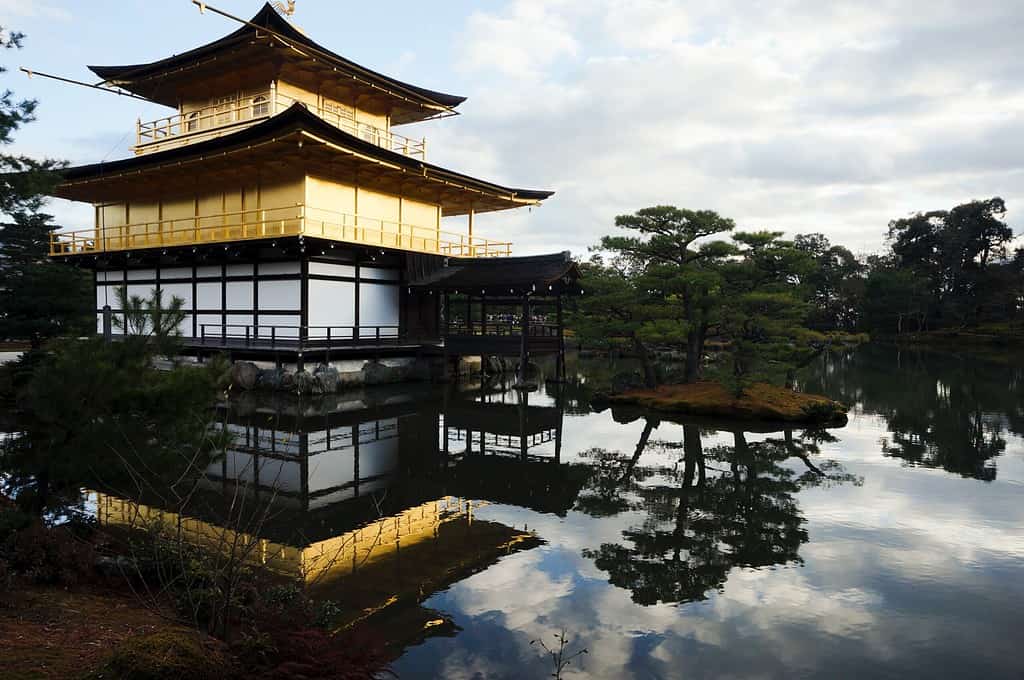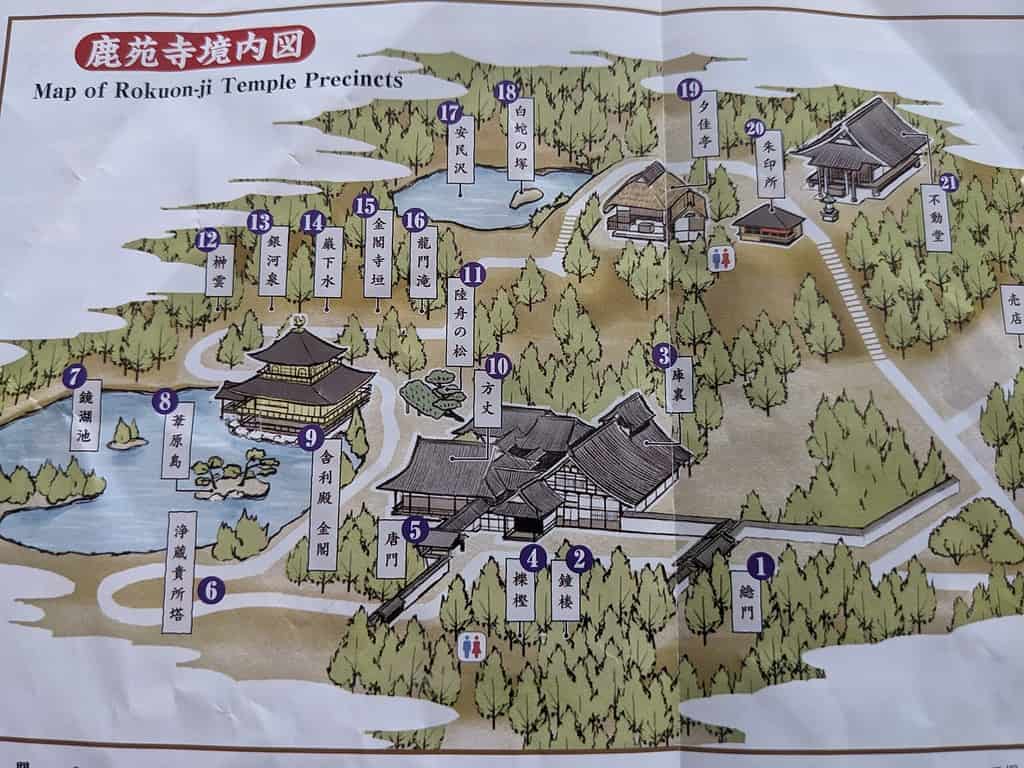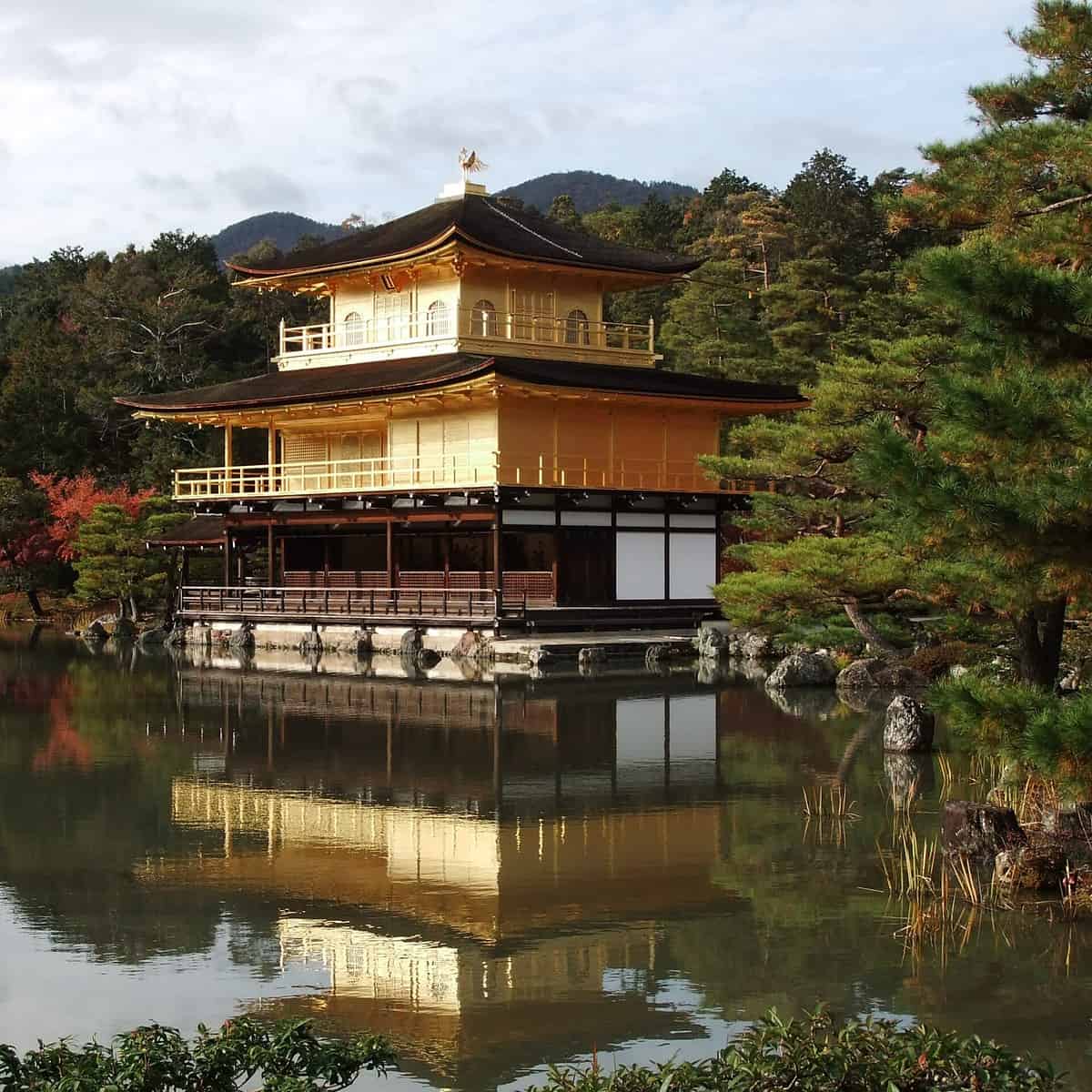Konnichiwa! Today we embark on a journey to explore the exquisite beauty and rich cultural significance of Kyoto’s Golden Pavilion, or Kinkaku-ji, which is one of Japan’s most popular landmarks. As a first-time visitor, I couldn’t contain my excitement to uncover the secrets held within this enchanting landmark. Join me as we delve into the fascinating history, architectural wonders, and practical tips for making the most of your visit to this shimmering gem in the heart of Kyoto.
When was the Golden Pavilion built?
Steeped in a tapestry of history, the Golden Pavilion dates back to the 14th century. Originally built as a retirement villa for the shogun Ashikaga Yoshimitsu, the pavilion later transformed into a Zen Buddhist temple following his death. While the complex has endured several reconstructions due to fires and wars, the essence of its original design remains intact, a testament to the enduring spirit of Japanese architecture.
What Religion is the Golden Pavilion?
Kinkaku-ji holds immense cultural significance as a symbol of Zen Buddhism and harmonious integration with nature. The pavilion’s upper two floors are covered entirely in shimmering gold leaf, radiating an ethereal glow that is sure to leave you awe-inspired. The juxtaposition of the golden reflection on the pristine pond creates a captivating and serene ambiance, making it an ideal spot for meditation and contemplation.
Features of the Golden Pavilion
As you approach Kinkaku-ji, prepare to be captivated by its architectural splendor. The three-story structure follows the distinct architectural style of each floor. The first floor showcases a traditional design with white walls and wooden pillars. The second floor boasts an elegant warrior theme with stunning samurai statues. Finally, the golden third floor, topped with a bronze phoenix, is the pinnacle of grandeur and spirituality.

Why is the Pavilion Gold?
The main reason behind its golden appearance is to symbolize wealth, opulence, and spiritual significance. The use of gold leaf covering is a unique feature of Japanese architecture, particularly seen in Buddhist temples and shrines.
From a spiritual perspective, the gold symbolizes the Buddhist concept of enlightenment and the pursuit of enlightenment. It represents the radiant and transcendent nature of the Buddha’s teachings. The application of gold leaf on the pavilion’s upper floors is a deliberate choice to create a visually striking and awe-inspiring structure.
Additionally, the golden exterior of Kinkaku-ji is a tribute to the extravagant Kitayama culture of the Muromachi period, during which it was built. The shogun Ashikaga Yoshimitsu, who commissioned the construction of Kinkaku-ji, aimed to create a residence that reflected his power and wealth.
The gold leaf applied to the pavilion is meticulously crafted and carefully maintained over the years. The gold leaf used is incredibly thin, measuring just a few micrometers in thickness. Skilled artisans delicately apply multiple layers of gold leaf to achieve the desired brilliance and luster.
Overall, the golden color of Kinkaku-ji represents a harmonious blend of spirituality, cultural symbolism, and artistic craftsmanship. It elevates the temple’s visual impact, making it a remarkable sight and a symbol of beauty and grandeur in Kyoto’s architectural landscape.
How Much Gold is on the Pavilion?
The exact amount of gold used on the Golden Pavilion, Kinkaku-ji, is not publicly disclosed. However, it is estimated that the pavilion is adorned with several kilograms of gold leaf.
Gold leaf, known as “kinpaku” in Japanese, is an extremely thin sheet of hammered gold that is applied to the surfaces of structures or artworks. It takes a significant amount of gold leaf to cover the upper two floors of the pavilion and create the dazzling golden appearance for which Kinkaku-ji is renowned.
The application of gold leaf requires skilled craftsmanship and meticulous attention to detail. The gold leaf is carefully affixed to the surface using traditional techniques, resulting in a flawless and radiant finish. Over time, regular maintenance and periodic reapplication of gold leaf may be necessary to preserve the pavilion’s golden appearance and protect it from weathering.
While the precise quantity of gold leaf used on Kinkaku-ji may not be known, what is certain is that the shimmering gold exterior adds to the allure and magical ambiance of the temple, making it a captivating sight for visitors from around the world.
Visitor Experience
Upon stepping into the temple grounds, you’ll be greeted by meticulously manicured gardens, meandering paths, and tranquil ponds. Take your time to explore the surrounding beauty as you make your way towards the pavilion. Crossing the iconic stone bridge, you’ll feel a sense of anticipation building up, knowing that the Golden Pavilion awaits, nestled harmoniously amidst the lush greenery.
Location and Access
Kinkaku-ji is situated in the Kita ward of Kyoto, making it easily accessible for visitors. The precise address of the temple is 1 Kinkakujicho, Kita Ward, Kyoto, 603-8361, Japan. You can reach Kinkaku-ji by various modes of transportation, including bus, taxi, or by taking the Kyoto City Subway and then a short bus ride. Plan your route in advance to ensure a smooth and hassle-free journey.
Admission: General admission is 500yen, student admission is 300yen
Operating Hours and Best Times to Visit
The temple’s operating hours are from 9AM to 5PM year round. Hours may change for special exhibits. To enjoy the tranquil beauty of the pavilion with fewer crowds, aim to arrive early in the morning. During the spring and autumn seasons, the temple is particularly enchanting, with cherry blossoms and fall foliage adding a vibrant touch to the surroundings. For more details, visit https://www.shokoku-ji.jp/en/kinkakuji/access/
Visitor Tips for a Memorable Experience
- Respect the sacredness of the site by following the temple’s guidelines, such as refraining from touching the pavilion.
- Be prepared for crowds, especially during peak tourist seasons, and exercise patience while navigating through the temple grounds.
- Take your time to explore the gardens and ponds surrounding the pavilion, as they offer serene spots for reflection and photography.
- Consider hiring a local guide who can provide in-depth insights into the history and cultural significance of Kinkaku-ji, enhancing your overall experience.
Exploring the Temple Grounds
Once you enter the temple grounds, be sure to explore beyond the Golden Pavilion itself. Take a leisurely stroll along the stone pathways that wind through beautifully landscaped gardens. Discover hidden tea houses, serene ponds teeming with koi fish, and picturesque bridges that offer different perspectives of the pavilion. The harmonious blend of architecture and nature creates a truly immersive experience.
On the route after passing the pavilion is a small shop where you can buy omamori and other souvenirs. There is also a place where you can purchase a goshuin stamp for your goshuincho stamp book.

Engaging with Japanese Tea Culture
While at Kinkaku-ji, immerse yourself in the traditional Japanese tea culture by visiting the tea house located within the temple complex. Savor a cup of matcha tea and indulge in a sweet treat as you relax and soak in the serene ambiance. This serene tea ceremony offers a glimpse into the refined and tranquil world of Japanese hospitality. Or, while in Kyoto, try a Macha Green Tea Guided Tour.
Souvenirs and Delicacies
Before bidding farewell to Kinkaku-ji, don’t forget to explore the souvenir shops near the temple exit. You’ll find a delightful array of traditional crafts, including beautifully crafted tea sets, calligraphy brushes, and intricate lacquerware. Treat yourself to some local delicacies like matcha-flavored sweets or traditional Kyoto snacks, making for perfect mementos of your visit.
Preservation and Restoration Efforts
Kinkaku-ji has undergone extensive restoration to preserve its splendor and historical value. The most recent restoration was completed in 1987, utilizing traditional construction techniques and materials. The dedication to maintaining the temple’s integrity showcases the profound reverence the Japanese people hold for their cultural heritage.
Departing with Lasting Memories
As your visit to Kinkaku-ji draws to a close, take a moment to reflect on the captivating beauty and spiritual aura that surrounds this magnificent golden pavilion. The peaceful ambiance, stunning architecture, and rich history of Kinkaku-ji make it an unforgettable destination. Depart with a sense of tranquility, carrying the memories of your time spent in this cultural treasure.
Kyoto’s Golden Pavilion, Kinkaku-ji, is an enchanting testament to Japan’s architectural and spiritual legacy. Its shimmering golden exterior, nestled amidst serene gardens, captivates the hearts of visitors from around the world. A visit to this UNESCO World Heritage Site offers an opportunity to delve into Japan’s rich history and immerse yourself in a tranquil and reflective atmosphere. So, grab your camera, open your heart to the beauty that awaits, and allow Kinkaku-ji to leave an indelible mark on your journey through Kyoto. Sayōnara and happy exploring!

